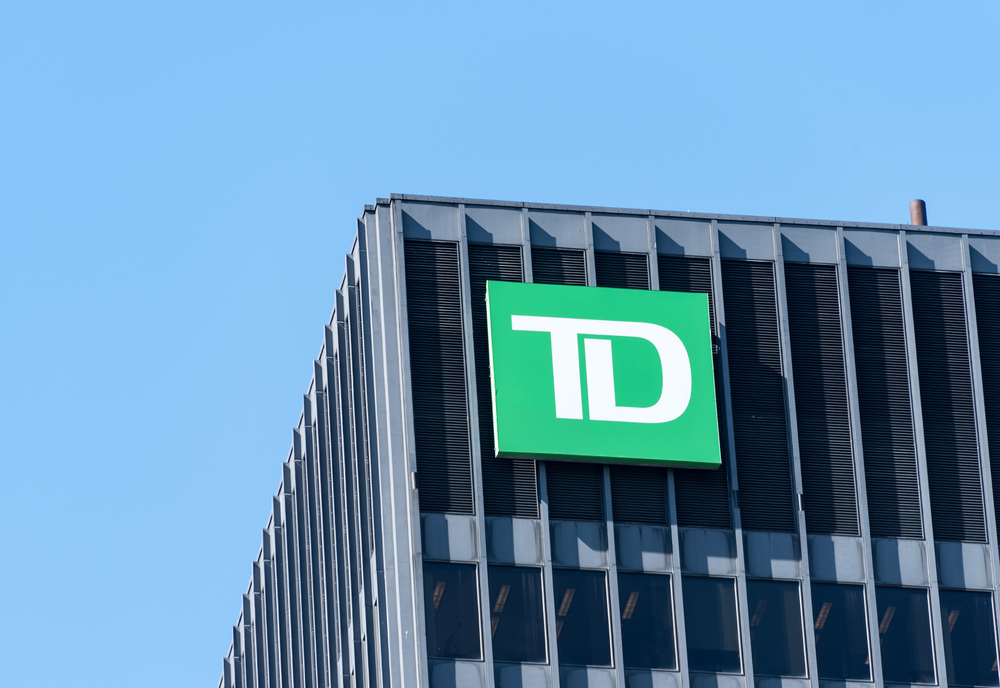Canada’s TD Bank Wants US Patent for Blockchain Point-of-Sale System

The Canadian parent conglomeration of the 9th largest bank in the United States, Toronto-Dominion Bank , has had a blockchain patent submitted to the US patent office since September of 2016. The patent covers a “virtual draft system and method” and includes the words “block chain” in such combination exactly 10 times.
The patent application, like most patent applications, uses the broadest possible language when describing blockchain technology, such that it’s not immediately evident what we’re reading about when they say something like:
[…] a signal representing a request comprising a first transfer from a first digital container associated with a first client to a second digital container associated with a second client; compare a value of the first transfer to a total value in one or more accounts associated with the first client, wherein at least one of the one or more accounts associated with the first client has a value in a first currency; and generate a first draft from a first account to an account associated with the second client, wherein the first draft comprises a value in a second currency equivalent to the value of the first transfer.
US Patent 20180089645
The patent falls under several international classifications pertaining to payments and remittance, and even things like missed tolls .
US Patent 20180089645 is essentially talking about one part of a new point-of-sale system TD Bank either has in the works or would like to own some intellectual property surrounding. It describes a modern computer (must have processor and storage attached to qualify) which can negotiate payments between currencies.
Also read: Canadian Bank to Offer Secure Vault for Cryptocurrencies
Virtual Draft System and Method
From the sounds, the user will have a form of payment which grants access to multiple accounts, and one of these accounts must have funds in the currency being dealt in. Another provision of the system described is that it will sometimes support — yep — blockchain tokens, such as Ether or Bitcoin.
This disclosure provides systems and methods for real-time drafting for transactions including a transfer of a digital asset tracked as a distributed electronic ledger, such as a block-chain ledger. A first party initiates a transaction including a transfer of a digital asset, such as a distributed ledger-based currency. The transaction is provided to a central authority for authorization and/or real-time drafting.
Such payment forms exist today, wherein essentially all of one’s accounts can be accessed, but they are very nascent. If there’s any group which will take more interest in this development than cryptocurrency enthusiasts, it will be Paypal and similar efforts as well as other banks who may have either competing products or existing intellectual property.
Can You Patent the Blockchain?
The patent appears to carefully avoid patenting an entire blockchain network by extolling a number of “embodiments” or manners in which this system can manifest itself. Patent trolling is a storied practice in the earliest days of the 21st century, in which property rights have found all new boundaries. Someone else can own data that appears on your device, and your personal information can belong to a corporation based on another continent.
However, for those who fear intellectual property and its associated frictions with open source are on their way to the blockchain, and who’ve raised the alarms for years since the rise of Coinbase, well, their fears are not entirely unjustified. Erich Spangenberg, who’s spent his career gobbling up patents and queuing up litigation surrounding them, has started a firm specifically with the intention of consolidating blockchain IP. In this blog on the subject, he admits:
While tempted to just trade, at some point in 2016, it occurred to me that blockchain could have a massively beneficial impact on the patent industry and patent asset class. I had some positively stupid initial ideas, but by 2017, the crazy ideas started to slow down and the better ones took over. I began assembling the team of programmers, data scientists, communications specialists and patent wonks we would need to implement and create a new business model that intelligently captures the power of blockchain in the patent space.
Although many computer scientists may disagree with software patents or the patent system as a whole, Spangenberg is certainly correct that the patent office is already dealing with crypto cases. Why, just last week Ford was issued a patent for some kind of fuel token. And then, of course, self-proclaimed Craig “Satoshi Nakamoto” Wright has also lined up a fair bit of business for the courts.
Featured image from Shutterstock.